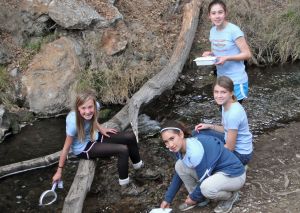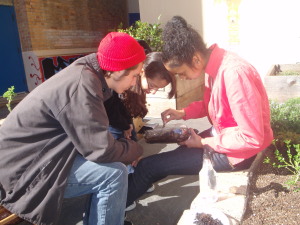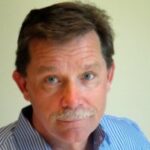Curricula are like tools: in the right hands magic happens, learning is made relevant, and learners are inspired. Deploying diverse instructional resources so students can build upon their own interests, life knowledge, and place in the world is especially important in serving 21st century learners.
The task before us with the new science standards (NGSS) is not simply guiding teenagers to mere facts (the filling of the proverbial empty vessel); instead NGSS provides the catalyst, the carefully articulated performance objectives, and the freedom to teach enduring habits. The new standards are an invitation to creativity, increased job satisfaction for teachers, and, most importantly, deeper learning of both content knowledge and critical 21st century habits of mind. With this exciting opportunity on offer the question becomes how to reach the sylvan land of learning where every child is engaged, exceeding performance objectives, and striving towards their personal potential every day?
 The threefold answer lies in celebrating students’ interests, supporting choice when defining learning objectives, and deploying a constellation of interesting curricula on significant topics. With these tasks accomplished, teachers will grow into multi-talented learning guides—advisors who are comfortable designing and guiding learning experiences with integrated content wherever learning may occur—from formal classrooms to community sites or even into a kelp forest off the coast of Southern California. In teacher jargon, it is called differentiation; in less formal circles, it is called ensuring exciting learning experiences. It’s not a standardized experience.
The threefold answer lies in celebrating students’ interests, supporting choice when defining learning objectives, and deploying a constellation of interesting curricula on significant topics. With these tasks accomplished, teachers will grow into multi-talented learning guides—advisors who are comfortable designing and guiding learning experiences with integrated content wherever learning may occur—from formal classrooms to community sites or even into a kelp forest off the coast of Southern California. In teacher jargon, it is called differentiation; in less formal circles, it is called ensuring exciting learning experiences. It’s not a standardized experience.
I believe NGSS is a gift to teachers and students if implemented with fidelity. However, in thirty years of teaching both indoors and out, I have yet to meet a “standard child.” Given diverse learners, we need diverse approaches and an appealing buffet of curricular tools when designing experiences that will meet the individualized needs of 21st century learners. It is good and appropriate to align our intentions—especially the language of our performance and competency objectives—but every learner follows their own path to become environmentally literate, an able communicator, a poet, or a scientist.
Let’s consider how the curricular buffet served one group of adolescents as they performed a project launched from an early EEI lesson, wove through what are now labeled the science and engineering practices (as articulated by a Habits of Mind curriculum by Costa and Kallick), extended into a community action activity prompted by curriculum from the California Coastal Commission, and culminated with students partnering with local nonprofit, Heal the Bay, on environmental restoration in the field. To illustrate the outcome of this process, I’ll begin with my own experience as a guide on the side in a kelp forest off the coast of Southern California.
As we swam, I wondered how my snorkeling student scientists would respond to being within a meter of wild animals whose teeth ran with blood and shattered remains of the their fishy prey. Would these suburban teens cringe away from the speeding sea lions, flee in terror from the bloody sight of top smelt being devoured underwater and give up on their investigation of ocean biodiversity, or be thrilled to their very marrow at the physical proximity of wild marine mammals?
As three sea lions raced through our group of swimmers in pursuit of the bait ball we ourselves had been trailing, my young science students responded with wonder, awe, and excited questions instead of fear and confusion. Hard earned habits including asking probing questions, constructing explanations through persistent effort, and relying on evidence to make decisions had prepared them to be poised for this encounter with wild animals. These habits of mind interwoven with accurate content knowledge of marine food webs had prepared these young teens to dive deeply into marine environmental science with an invigorating boldness and competence that belied their youth. In addition, they remain committed environmental stewards. Now in college, the six students described above perform environmental work, self-describe as interested in conservation or marine biology, and two are aiming at marine science careers.
A reasonable person might ask where are the rest of my 36 students? Did the curricular buffet work for them? As we swam in the cold Pacific, other students were maintaining trails, restoring riparian habitat, or leading younger children in learning experiences. All launched out of our classroom and into some part of our community, the natural environment, or cross-age education by using the applicable parts of curricular products that served their diverse interests. Readying students for college, career, and civic action is an interest-based process that proceeds through organized curricular offerings and crescendos with action outside of formal classrooms. When moving from academics to action is the goal, the starting point is student voice and choice as offered by the curriculum buffet approach—a cornucopia of offerings from state sources, NGOs, environmental groups, museums, aquariums, and teachers. In essence, we need a variety of materials if we are to teach one child at a time.
 NGSS is pointing the way, and with California’s existing wealth of environmental education (EE) curricular resources as navigation markers it is time to construct a network of diverse environmental education pathways that will support every student on personalized journeys of environmental discovery, service learning, and community leadership. The overarching purpose of this 21st century web of EE pathways is to go beyond mere knowledge, above good intention, and into the realm of environmental action. Being literate, numerate, and knowledgeable is only a foundation for what really matters—the ability to act intelligently, to live in a culture of continuous improvement.
NGSS is pointing the way, and with California’s existing wealth of environmental education (EE) curricular resources as navigation markers it is time to construct a network of diverse environmental education pathways that will support every student on personalized journeys of environmental discovery, service learning, and community leadership. The overarching purpose of this 21st century web of EE pathways is to go beyond mere knowledge, above good intention, and into the realm of environmental action. Being literate, numerate, and knowledgeable is only a foundation for what really matters—the ability to act intelligently, to live in a culture of continuous improvement.
Young people who can translate their good intentions into impact are currently rare gems; however, it is within our ability—as educators, adult guides, and mentors—to change this scarcity into abundance and build a system that will daylight the gem in every child. The path to this constellation of diversified EE pathways for all children runs through:
- Deep capacity-building professional development for classroom teachers as they transition into guides by the side (lesson study models are particularly effective) who are capable of leading multiple projects on a variety of topics simultaneously.
- Place-based curricular partnerships between the state, universities, NGOs, and local education agencies (school districts). The development of workshops between Project Wet and Education and the Environment Initiative Curriculum is a good example of this complementary approach.
- The critical culminating step of any serious EE effort: getting learners out of traditional classrooms and into the community or field.
Each of these ideas is being implemented all over California to great success. However, if our intention is truly to reach every child, then it is time to transcend organizational, content area, and curricular boundaries to ensure that every child in the state has the opportunity to become environmentally literate. Equally, it is time to celebrate, elevate, and coordinate the diversity of offerings within the EE field. It is time—past time really—to transform our thinking about state standards. Instead of aligning our diverse offerings into a curricular monoculture, we can use the new state standards as a launch pad to a wealth of diverse resources—the curricular buffet.


3 Responses
Kurt:
I really liked your article. I have been pouring over the EEI curriculum and loving it, and saw with pleasure that you are one of their authors. I have been very involved over the last 2 years in STEAM curriculum and NGSS, a bit of a departure since our SMASH days. (Now I’m a NSTA member too!) So excited to see what you are doing and would love to catch up.
Good Afternoon,
My name is Ellen Link. I am a science teacher (with prior stints in environmental ed., coastal zone mgt., and marine science).
I attended your NMEA session in Annapolis–and out of the foggy depth of my 50 year old brain your name surfaced. Looked for you at Newport, but did not see you.
I am writing a capstone paper for a M.Ed about place-based, project-based education and need to do a literature review. Might you be able to point me towards some articles or books?
I am fortunate to work at a charter school that gives me broad swaths of freedom to get my students outside–and I have the parent support you emphasized as being key. This year I am doing a project that dovetails current drifters with invasive crabs.
Other than the fact that I have crabs in buckets everywhere (waiting to have data recorded about them), it’s a blast and certainly my best work with students to date. The kids are making big connections and are having the chance to interact with researchers at NOAA, WHOI, Boston U. as well as commercial clammers, fishers, etc.. Of course, being in the field up to our knees in marsh mud is the best part.
I think that 2 summers ago you had just, or were about to, move from CA to MD, hope the transition has been a good one.
Thank you for your time and any sources you might be able to send my way.
Ellen Link
Newburyport MA
508-284-8025
I want to know about the picture of the seal. I would love permission to paint this. Is it yours?
Thanks.